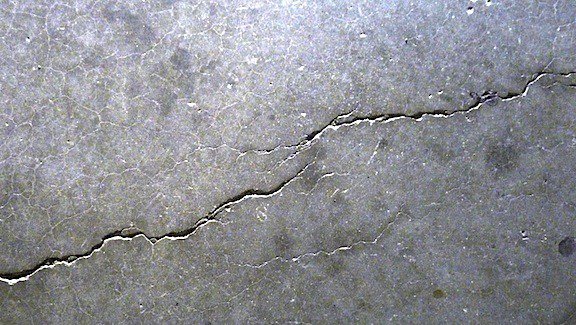Preetham Granites are largest manufacturers, suppliers and exporters of INDIAN GRANITES, especially, Black Galaxy Granite, Absolute Black Granite, Black Forest Granite, Black Pearl Granite, Stel Grey Granite, Viscont White Granite, Imperial White Granite, Colonial White Granite, Asian Top Granite, Shiva Gold Granite, Dindigul pink Granite, Ghibli Pink Granite, Ghibli Grey Granite, Paradiso Granite, Tan Brown Granite,Red Multi Granite, Columbu Juparana Granite, Colonial Gold Granite, Imperial Gold granite slabs and countertops. These granite slabs and countertops are mainly exported to USA, Europe, Canada and Australia.
Preetham Granite M.D addressed the gathering of engineers (Association of Madurai Civil Engineers) on Cracks in Buildings - Causes & Remedies at Hotel Weshtern Park ( 01.09.2016).
Shrinkage Cracks:
Shrinkage cracks in concrete occur due to change in moisture of concrete. Most of the building materials like concrete, mortar, burnt clay bricks are porous in their structure in the form of inter-molecular space. They expand when they absorb the moisture and shrink when they dry. This is the main cause the concrete shrinks on drying. Shrinkage of concrete is an irreversible process.
Types of Shrinkage in Concrete
There are two types of shrinkage in concrete:
1. Initial Shrinkage
2. Plastic Shrinkage
1. Initial Shrinkage Cracks in Concrete
Initial shrinkage cracks in concrete normally occurs in all building materials or components that are cement/lime based such as concrete, mortar, masonry units, masonry and plaster etc. and is one of the main cause of cracking in structure.
Initial shrinkage in concrete and mortar occurs during construction of structural member due to drying out of moisture. The initial shrinkage of concrete is partly reversible if the moisture is maintained in concrete, but it becomes irreversible when concrete becomes dry. During curing, due to subsequent wetting and drying this shrinkage exceeds and crack is developed in concrete.
Plastic Shrinkage Cracks
- concrete surface loses water faster than the bleeding action brings it to top
- Quick drying of concrete at the surface results in shrinkage]
- Concrete at the plastic state can not resist tension
- Crack depth 5 to 10 cm, width 3 mm
- once developed difficult to rectify
- Moisture the sub grade and form work
- Erect the temporary wind breaker
- Erect the temporary roof to protect green concrete from hot sun.
- Reduce the time between placing & finishing
- In case of delay in finishing cover the concrete with polythene
Bleeding
- Upward movement of water when concrete settle downs
- Internal bleeding
- Bleeding water trapped below
reinforcement & aggregate
- Affects bonds between reinforcement and
concrete
- Interface, prone to micro cracking
- Weak link n concrete
- Further loading propagate cracking
- External Bleeding
- Upward movement of water emerged at top surface
- After evaporation : surface – Porous and abrasion resistance very little
Delayed Curing
- Common practice
- Delayed Curing
- Interruption in continuous curing
- curing not done for required period-
- Major Cause for shrinkage
- Minimum 7 to 10 days curing required
Efflorescence Moisture reacting with soluble salts and appearing at the surface as white powder. It will destroy putty and paint finish and present an ugly appearance,
General:
1.Use concrete which has low shrinkage and low slump
- Do not adopt a very fast pace of construction.
- Do not provide brickwork over a flexural RCC member (beam or slab) before removal of centering and allow a time interval of at least 2weeks between removal of centering and construction of partition or panel wall over it.
- When brick masonry is to be laid abutting an RCC column defer brickwork as much as possible
- When RCC and brickwork occur in combination and are to be plastered over allow sufficient time (at least one month) to RCC and brickwork to undergo initial shrinkage and creep before taking up plaster work. Also either provide a groove in the plaster at the junction or fix a 10cm wide strip of mesh or lathing over the junction to act as reinforcement for the plaster.
- In case of RCC members which are liable to deflect appreciably under load for wxamble, cantilevered beams and slabs removal of centering and imposition of load should be defferd as much as possible ( at least one month) so that concrete atttains sufficient strength before it bears the load.








No comments